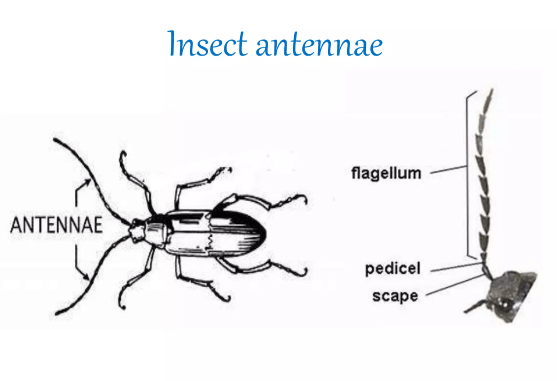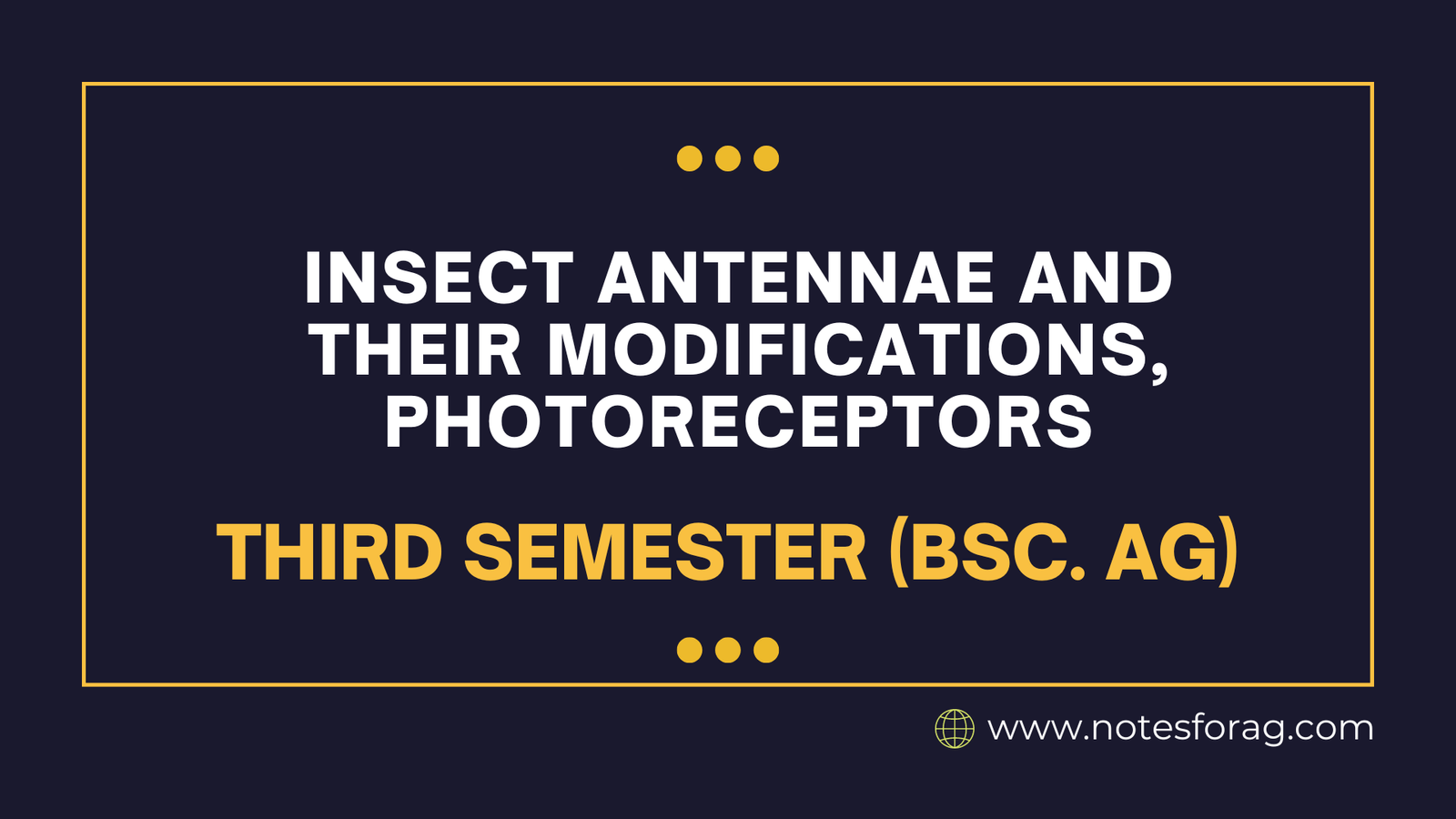Insect antennae are diverse sensory organs that sense chemical signals (smell), vibrations, and, in some cases, temperature and humidity. Insects have highly developed antennae that vary greatly in shape and function, detecting chemical, mechanical, and even thermal stimuli. Filiform (thread-like), pectinate (comb-like), and plumose (feathery) features are common adaptations designed for specific objectives such as pheromone sensing or environmental change detection. Insects have both compound eyes, made up of multiple ommatidia for sensing movement and providing a wide field of view, and simple eyes (ocelli), which aid in determining light intensity. These modifications of insect antennae help insects move, communicate, and thrive in a variety of habitats.
Table of Contents
Insect Antennae and Their Modifications
Insect antennae function as primary sensory organs, sensing chemical, mechanical, thermal, and auditory stimuli. They are extremely specialized and differ widely among species. The primary function of insect antennae is sensory perception. These appendages contain multiple sensors that allow insects to detect ambient stimuli such as scents, touch, and vibrations. The ability to smell chemical messages in the air, particularly pheromones, is critical for communication, breeding, and foraging. Antennae also assist insects navigate varied ecosystems by monitoring changes in their surroundings, allowing them to respond to predators and environmental disturbances.

1. Basic Structure of Antennae:
- Scape: The base segment connects the antenna to the head.
- Pedicel: The second section typically contains a sensory organ (Johnston’s organ).
- Flagellum: The elongated section of the antenna made up of several segments.
2. Common types of antenna modifications:
- Filiform: Thread-like and found in many insects (such as ground beetles).
- Setaceous: Bristle-like structure found in dragonflies and damselflies.
- Moniliform: Bead-like segments are frequently found in termites.
- Serrate: Saw-edged, which is common in click beetles.
- Pectinate: Comb-like, commonly observed in male moths to detect pheromones.
- Clavate: Clubbed, as seen in butterflies, the antennae gradually thicken towards the tip.
- Plumose: Feathery, as seen in some male mosquitos, increases surface area for detecting female pheromones.
- Aristate: Flies (Diptera) bear a bristle.
Photoreceptors in Insects: Compound and Simple Eyes
Insects have two types of eyes: compound eyes and simple eyes (ocelli), both of which feature photoreceptors that detect light and allow the insect to perceive its surroundings.
1) Compound Eyes:
- Structure: Composed of multiple ommatidia (small optical units), each with their own lens and photoreceptor cells.
- Function: Each ommatidium collects light from a small portion of the visual field and combines it to produce a mosaic image.
- Advantages:
- Excellent for sensing movement.
- A wide field of view.
- Disadvantages:
- Lower resolution when compared to vertebrate eyes.
- Reduced capacity to focus and detect fine detail.
- Example: Most mature insects, including flies, bees, and dragonflies, have compound eyes. Dragonflies, for example, have approximately 360° eyesight and are excellent at detecting motion.
2. Simple Eyes (ocelli):
- Structure: A single lens spans many photoreceptor cells.
- Function: It is mostly used to detect changes in light intensity rather than detailed images.
- Advantages:
- Quick responsiveness to changes in light, assisting in fly stabilization.
- Assists in detecting light levels at dusk and sunrise.
- Example: Many insects have compound eyes, including bees and wasps. Some larval insects, such as caterpillars, use rudimentary eyes to detect light.
These antennal and visual system adaptations enable insects to interact with their surroundings in a variety of unique and specialized ways.
Frequently Asked Questions
What is the difference between compound eyes and simple eyes (ocelli)?
Compound eyes are made up of many ommatidia, each of which forms part of an image, allowing insects to sense movement and see a wide range of objects. Simple eyes (ocelli) sense variations in light intensity but do not produce detailed images, which aids with stability and light perception.
What is the primary function of insect antennae?
Antennae are sensory organs that allow insects to perceive chemical signals (smells), mechanical changes (touch, vibrations), and, in rare cases, temperature or sound.
Related Articles

